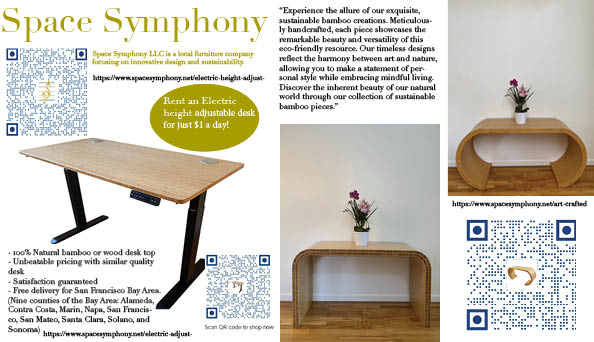As Election Day approaches for the School Board candidates, the achievement gap issue continues to be a major source of debate.
According to a ranking by Education Trust West in 2011, Palo Alto scored a “D” in its service to minority and economically disadvantaged students.
At a public forum on Oct. 10 in Palo Alto High School’s English Resource Center, School Board candidates addressed the effect of increasing enrollment on the achievement gap, as well as the potential of raising high school graduation requirements to meet A-G standards set by University of California and California State Universities.
Achievement Gap and the Influence of Class Sizes
To address the gap, candidate Heidi Emberling called for early intervention, starting from preschool. One such program is Springboard to Kindergarten, which gives students who cannot afford preschool preparation for elementary school.
“Some of the Latino families I’ve talked to just repeated kindergarten as preschool,” Emberling said.
A Paly student at the forum asked how the candidates would address the achievement gap while dealing with the increasing enrollment.
“The strongest predictor of success is not classroom size but teacher characteristics,” candidate Ken Dauber said. “We can survive larger class sizes while narrowing achievement gap and the underlying issues.”
Dauber, co-founder of We Can Do Better Palo Alto and a vocal advocate for bridging the gap, encouraged teachers to use current research to improve their courses to accommodate all students.
Candidate Melissa Baten-Caswell agreed that teachers, not class size, makes the difference.
“Research shows that truly excellent teachers make a difference,” Caswell said. “For example, Woj [Paly journalism teacher Esther Wojcicki] has around 70 students in her class, but it doesn’t feel like that because she’s a phenomenal teacher and can handle it.”
Caswell highlighted that with the state budget cuts, the district needs to prioritize its values.
“We increase class sizes because we’re not willing to fire teachers or have teachers take time off with no pay,” Caswell said. “While we are not willing to cut electives and foreign languages, we are willing to let class sizes grow.”
Camille Townsend reminded audience members that the success of Palo Alto schools has played a key factor in the growing student population.
“The reason enrollment goes up is because parents are attracted to these schools,” Townsend said. “In elementary schools, we raised class sizes some. Parents were comfortable in making that decision.”
Townsend recognized the challenge of class sizes in high schools, and promoted site-based solutions.
“The best thing we can do is to give principals more leeway to make changes based on the needs of the individual schools,” Townsend said.
A-G Requirements
A parent wrote in a question for the candidates: what do they think about the “Paly math letter?”
In 2011, while the School Board debated whether or not to make the entrance requirements for UC and CSU the same as PAUSD’s graduation requirements, the Paly math department resisted in a signed letter, which is downloadable from We Can Do Better Palo Alto.
The Paly math department letter argued that elevating the graduation requirement would “either stop a significant number of students from graduating or, alternatively, force us to drastically lower standards in our courses as too many other schools have done.”
Many parents responded angrily, and the School Board postponed its decision.
Townsend supports the A-G requirements, and proposed that adding easier courses, especially in algebra, would help address the concerns.
“Some of those courses have been changed so that [for] kids who haven’t historically taken those classes, it’s within their reach,” Townsend said. “I think that is the right step to take, and I support that.”
Dauber reinforced Townsend’s statement that the job of a public school is to teach all children, regardless of their academic abilities.
“If we are hearing that the curriculum shouldn’t be lowered or watered down in order to meet the needs of some students, then I would say that that is not consistent with the goals we have for public education and that we should reject that perspective,” Dauber said.
Dauber also promoted growth mentality among teachers, warning that stereotype threat would lower students’ expectations of themselves.
“We want our teachers to be advocates for the growth potential of our kids,” Dauber said. “Kids faced with lower expectations from teachers will lower their performance to meet those lower expectations. Conversely, kids will also rise to meet that [expectation].”
Emberling described the Paly math letter as a “communication breakdown” because the math department did not contact the Paly principal but the School Board directly.
“I think we want to make sure that we are looking at the school within the school before looking at it out of the school,” Emberling said.
Emberling characterized the A-G requirements as “a great step forward for the district” and agreed with Dauber on the importance of having a growth mindset.
Caswell stated that the district was not ready for the Board to roll out the A-G requirements due to lack of communication with individual school departments.
“In our Strategic Plan five years ago, we said that it was our goal to make the college entrance requirements for the UCs and CSUs our graduation requirements,” Caswell said. “But what we didn’t do effectively was to make sure we talked through this with each department and talked about why that is our goal.”
According to Caswell, the Board has brought in the National Equity Project to work on professional development, and is investigating ideas from other districts about “how to teach Algebra 2 in new and innovative ways.”
“We learned something from this process,” Caswell said.
In this forum, candidates also debated about the efficiency of the district calendar and new technology.


